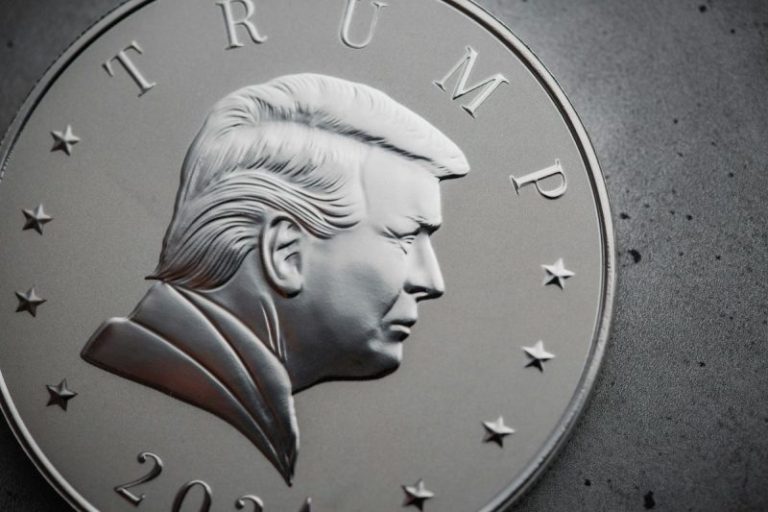Easement to Facilitate Near-Term Exploration Logistics for New Amalga Gold Project & Secure Road Route Spanning One-Third of Distance from Public Highway to Project Site
Grande Portage Resources Ltd. (TSXV:GPG)(OTCQB:GPTRF)(FSE:GPB) (‘Grande Portage’ or the ‘Company’) is pleased to announce that it has applied for a State of Alaska easement related to its New Amalga Gold project in southeast Alaska. This easement application incorporates a proposal for development of approximately 1.3 miles (2 km) of gravel road along with two equipment staging areas.
Extending from Glacier Highway across State of Alaska property, development of this road segment will greatly facilitate the Company’s helicopter-supported exploration efforts by establishing an equipment staging area much closer to the project site. The helicopter shuttle distance for transporting drilling equipment and supplies would be reduced by over 60% for each cycle compared to the previous staging area located in the Juneau Mendenhall Valley suburbs.
Ian Klassen, President and CEO comments: ‘The submission of this easement application is an important step for the project. The proposed road development and equipment staging areas will not only enhance the efficiency of our exploration efforts but will also reduce the impact of helicopter noise on residential areas of the Mendenhall Valley. Furthermore, this road segment will comprise a significant proportion of the overall road development required to ultimately establish surface access to the project site.’
This initial road segment would span approximately one-third of the total distance from Glacier Highway to the project site, ending at the boundary between State of Alaska and US Forest Service land. Further road development will require separate federal environmental review and permitting. Baseline environmental studies are ongoing in order to support future federal submissions.
The future facilities at the project site are envisioned to include a small-footprint underground mining operation without an ore processing plant or tailings disposal landfill. Due to the resource location near tidewater and less than 4 miles (6.5km) from existing paved highway (Fig. 1), the Company considers off-site processing by a third party to be the most favorable configuration for the project.
Kyle Mehalek, P.E.., is the QP within the meaning of NI 43-101 and has reviewed and approved the technical disclosure in this release. Mr. Mehalek is independent of Grande Portage within the meaning of NI 43-101.
About Grande Portage:
Grande Portage Resources Ltd. is a publicly traded mineral exploration company focused on advancing the New Amalga Mine project, the outgrowth of the Herbert Gold discovery situated approximately 25 km north of Juneau, Alaska. The Company holds a 100% interest in the New Amalga property. The New Amalga gold system is open to length and depth and is host to at least six main composite vein-fault structures that contain ribbon structure quartz-sulfide veins. The project lies prominently within the 160km long Juneau Gold Belt, which has produced over eight million ounces of gold.
The Company’s updated NI#43-101 Mineral Resource Estimate (MRE) reported at a base case mineral resources cut-off grade of 2.5 grams per tonne gold (g/t Au) and consists of: an Indicated Resource of 1,438,500 ounces of gold at an average grade of 9.47 g/t Au (4,726,000 tonnes); and an Inferred Resource of 515,700 ounces of gold at an average grade of 8.85 g/t Au (1,813,000 tonnes), as well as an Indicated Resource of 891,600 ounces of silver at an average grade of 5.86 g/t Ag (4,726,000 tonnes); and an Inferred Resource of 390,600 ounces of silver at an average grade of 7.33 g/t silver (1,813,000 tonnes). The MRE was prepared by Dr. David R. Webb, Ph.D., P.Geol., P.Eng. (DRW Geological Consultants Ltd.) with an effective date of July 17, 2024.
ON BEHALF OF THE BOARD
‘Ian Klassen’
Ian M. Klassen
President & Chief Executive Officer
Tel: (604) 899-0106
Email: Ian@grandeportage.com
Cautionary Statement Regarding Forward-Looking Information
This news release includes certain ‘forward-looking statements’ under applicable Canadian securities legislation. Forward-looking statements include estimates and statements that describe the Company’s future plans, objectives or goals, including words to the effect that the Company or management expects a stated condition or result to occur. Forward-looking statements may be identified by such terms as ‘believes’, ‘anticipates’, ‘expects’, ‘estimates’, ‘may’, ‘could’, ‘would’, ‘will’, or ‘plan’. Since forward-looking statements are based on assumptions and address future events and conditions, by their very nature they involve inherent risks and uncertainties as described in the Company’s filings with Canadian securities regulators. There can be no assurance that such statements will prove to be accurate, as actual results and future events could differ materially from those anticipated in such statements. Accordingly, readers should not place undue reliance on forward-looking statements. The Company disclaims any intention or obligation to update or revise any forward-looking information, whether as a result of new information, future events or otherwise, other than as required by law.
Please note that under National Instrument 43-101, the Company is required to disclose that it has not based any production decision on NI 43-101-compliant reserve estimates, preliminary economic assessments, or feasibility studies, and historically production decisions made without such reports have increased uncertainty and higher technical and economic risks of failure. These risks include, among others, areas that are analyzed in more detail in a feasibility study or preliminary economic assessment, such as the application of economic analysis to mineral resources, more detailed metallurgical and other specialized studies in areas such as mining and recovery methods, market analysis, and environmental, social, and community impacts. Any decision to place the New Amalga Mine into operation at levels intended by management, expand a mine, make other production-related decisions, or otherwise carry out mining and processing operations would be largely based on internal non-public Company data, and on reports based on exploration and mining work by the Company and by geologists and engineers engaged by the Company.
NEITHER THE TSX VENTURE EXCHANGE NOR ITS REGULATION SERVICE PROVIDER (AS THAT TERM IS DEFINED UNDER THE POLICIES OF THE EXCHANGE) ACCEPTS RESPONSIBILITY FOR THE ADEQUACY OR ACCURACY OF THIS NEWS RELEASE
Source
Click here to connect with Grande Portage Resources Ltd. (TSXV:GPG)(OTCQB:GPTRF)(FSE:GPB) to receive an Investor Presentation










